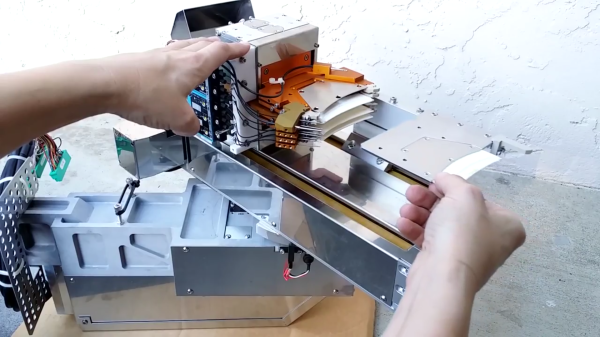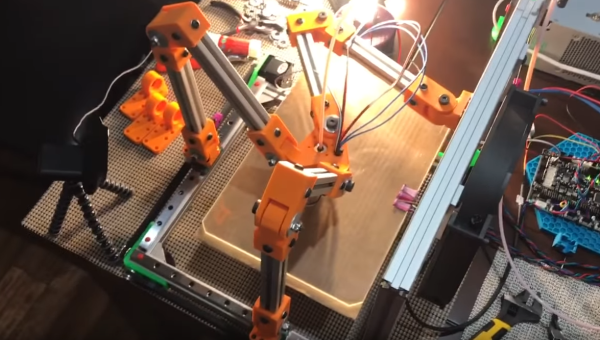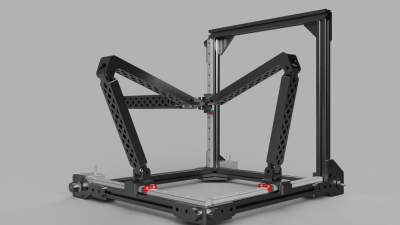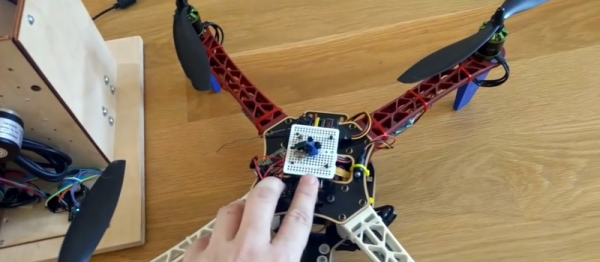There’s nothing more freeing than to be an engineer with no perceptible budget in sight. [BrendaEM] walks us through a teardown of a machine that was designed under just such a lack of constraint. It sat inside of a big box whose job was to take silicon wafers in on one side and spit out integrated circuits on the other.
[BrendaEM] never really divulges how she got her hands on something so expensive that the engineer could specify “tiny optical fiber prisms on the end of a precision sintered metal post” as an interrupt solution for the wafer. However, we’re glad she did.
The machine features lots of things you would expect; pricey ultra precise motors, silky smooth linear motion systems, etcetera. At one point she turns on a gripper movement, the sound of it moving can be adequately described as poetic.
It also gives an unexpected view into how challenging it is to produce the silicon we rely on daily at the ridiculously affordable price we’ve come to expect. Everything from the ceramic plates and jaws that can handle the heat of the silicon right out of the oven to the obvious cleanliness of even this heavily used unit.
It’s a rare look into an expensive world most of us peasants aren’t invited to. Video after the break.
Continue reading “Silicon Wafer Transfer Machine Is Beautifully Expensive”




 A few people have experimented with Tripteron printers over the years, but as far as we can see, no one has ever demonstrated a working model. Enter [Apsu], who showed up about a month ago. She started a post on the RepRap forums discussing her particular design. She works fast, and has now demonstrated a working prototype making prints. Sure they’re just calibration cubes, but this is a huge step forward.
A few people have experimented with Tripteron printers over the years, but as far as we can see, no one has ever demonstrated a working model. Enter [Apsu], who showed up about a month ago. She started a post on the RepRap forums discussing her particular design. She works fast, and has now demonstrated a working prototype making prints. Sure they’re just calibration cubes, but this is a huge step forward.












